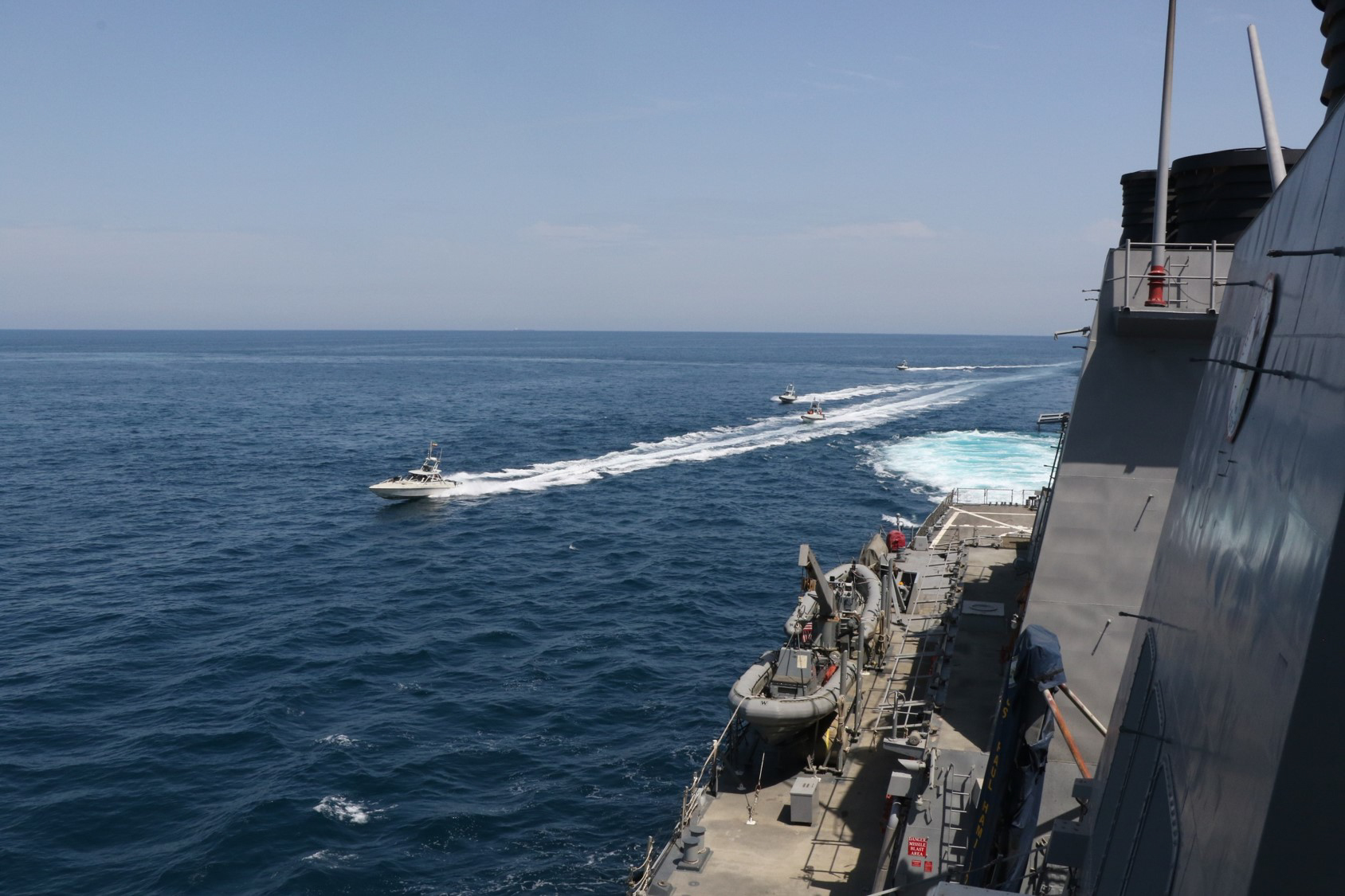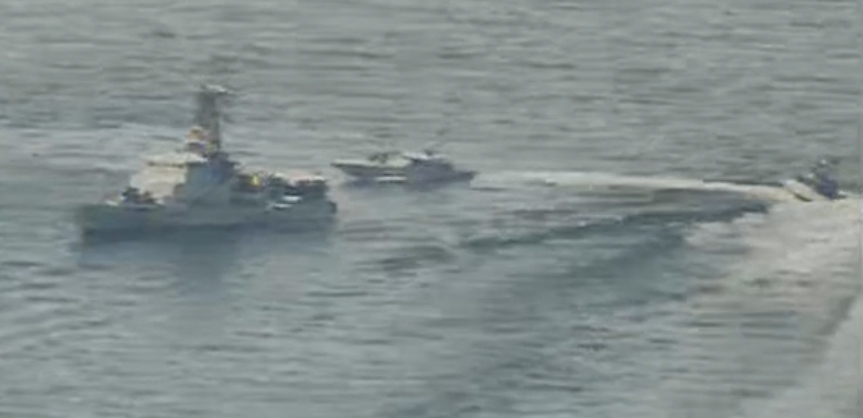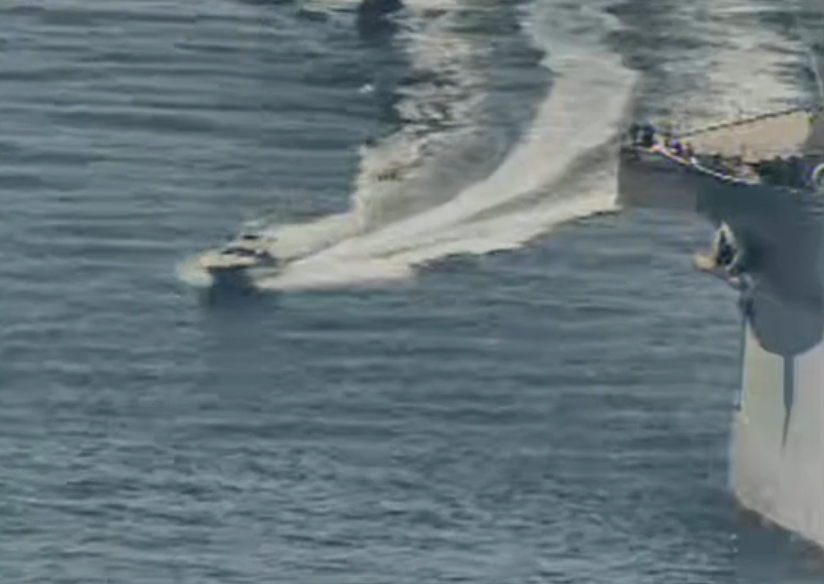
Nearly a dozen Iranian Islamic Revolutionary Guard Corps Navy (IRGCN) vessels harassed a formation of U.S. Navy and Coast Guard ships in international waters in the northern Persian Gulf, the Navy announced today.
Eleven Iranian vessels “repeatedly conducted dangerous and harassing approaches of the USS Lewis B. Puller (ESB-3), USS Paul Hamilton (DDG-60), USS Firebolt (PC-10), USS Sirocco (PC-6), USCGC Wrangell (WPB-1332) and USCGC Maui (WPB-1304) while the U.S. vessels were conducting joint integration operations with U.S. Army AH-64E Apache attack helicopters in the international waters of the North Arabian Gulf,” the Navy statement reads.
“The IRGCN vessels repeatedly crossed the bows and sterns of the U.S. vessels at extremely close range and high speeds, including multiple crossings of the Puller with a 50 yard closest point of approach (CPA) and within 10 yards of Maui‘s bow.”
Images from the incident show three Iranian vessels in close proximity to Puller at once, one vessel crossing directly in front of Paul Hamilton, four vessels coming up fast behind Paul Hamilton, and more. As has been the case in other similar incidents, the IRGCN sends a large number of fast, nimble boats to speed in and out of the paths of much larger U.S. warships, causing an unsafe situation for the larger ships that take longer to stop or change direction.
The Navy and Coast Guard crews issued multiple warnings via bridge-to-bridge radio, five short blasts from the ships’ horns and long-range acoustic noise-maker devices, but they received no response from the IRGCN for an hour, when the vessels finally responded to the radio calls and increased the distance between the Iranian and U.S. ships.
“The IRGCN’s dangerous and provocative actions increased the risk of miscalculation and collision, were not in accordance with the internationally recognized Convention on the International Regulations for Preventing Collisions at Sea (COLREGS) ‘rules of the road’ or internationally recognized maritime customs, and were not in accordance with the obligation under international law to act with due regard for the safety of other vessels in the area,” reads the Navy statement.
The Navy, Marine Corps, Coast Guard and Army have been conducting joint interoperability operations in the North Arabian Gulf since late March, the Navy said.

Today’s action follows the interception of a Hong Kong-flagged tanker just one day before. The International Maritime Security Construct (IMSC) monitored an incident yesterday where Iranian forces boarded the tanker operating in international waters in the Gulf of Oman.
“Initial reports indicated the ship was boarded by armed men and sailed into Iranian territorial waters, before it was released with all of its crew reported safe,” reads a IMSC news release today.
“We did not receive a distress call or request for assistance from the vessel, but the incident occurred in our area of operations,” IMSC commander Commodore James Parkin said in the statement.
“Our Sentinel and Sentry ships patrol the high traffic, vital waterways of the regional waters within the Middle East to provide over watch and support merchant shipping if assistance is requested.”

IMSC assessed no immediate threat to the free flow of shipping in the area and therefore took no further action with its ships or aircraft after seeing the tanker and its crew go free.
The U.S. Navy had been operating two aircraft carriers in the U.S. 5th Fleet and U.S. Central Command area of operations for several months, with CENTCOM Commander Gen. Kenneth McKenzie telling lawmakers last month that it was an effective deterrence against Iran.
This week, though, just one carrier strike group, the Eisenhower CSG, sits outside the Persian Gulf in the Northern Arabian Sea, and the Bataan Amphibious Ready Group is in the Northern Persian Gulf, in the area where today’s incident took place.





